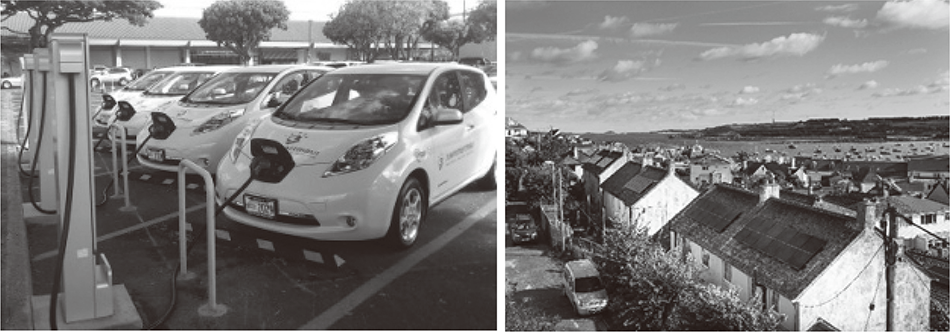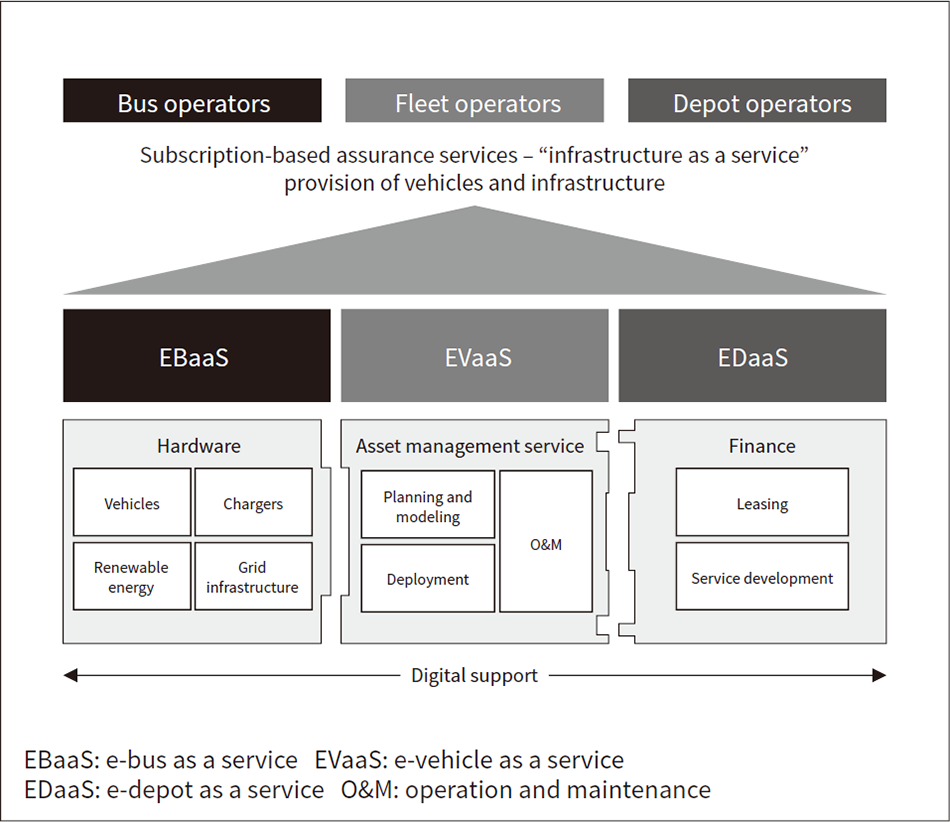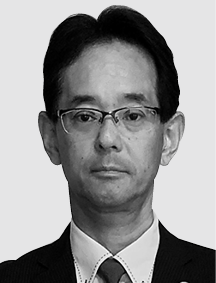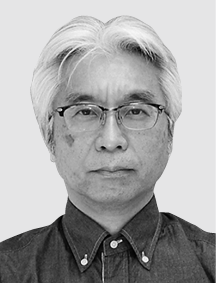[ⅰ]Environmental Technologies Contributing to Achieving Carbon NeutralityDevelopment of Smart Power Management for Achieving Carbon Neutrality by 2050Energy Ecosystems for Widespread EV Adoption
Highlight
As countries around the world work toward achieving carbon neutrality in 2050, the decarbonization of electricity generation to reduce emissions of CO2 from primary energy sources and the switch to electricity for powering cars, ships, and aircraft as well as agricultural and industrial systems (electrification) has been accompanied also by an acceleration in the development of negative emission technologies for the direct capture and removal of CO2. In particular, it is anticipated that achieving net-zero emissions in 2050 will require motor vehicle manufacturing to have switched entirely to EVs, PHVs, and other such technologies by around 2035. However, if this is to be accomplished, it will require not only the right vehicles, but also the establishment of an energy market that is convenient for drivers and owners in an energy ecosystem that forms part of the mobility infrastructure. This article describes the work being done on bi-directional multi-port charging and discharging technology that features efficient interoperation with vehicles, stationary batteries, and building systems, as well as rapid onboard charging and next-generation charging solutions.

Introduction
With estimated worldwide direct emissions from automobiles accounting for 24% of total carbon dioxide (CO2) emissions, according to Japan’s Ministry of Economy, Trade and Industry, the wider adoption of electric vehicles (EVs) has the potential to significantly change both the environment and the economy. By promoting greater diversity in the energy mix required for a transition to carbon neutrality, and by reducing fossil fuel dependence as well as emissions of greenhouse gases and other pollutants, EVs by their very nature are positioned to become a driving force behind the creation of a sustainable environment and a safe and reliable energy cycle. If EVs are to become a feature of society, however, the uptake of these vehicles will need to be accompanied by the equipping of regional communities with efficient energy ecosystems, establishing energy markets that are convenient for drivers and owners under the diverse circumstances found in towns and cities across the world.
Trends and Challenges for Wider EV Adoption
Figure 1 — Energy Ecosystem that Delivers Both Environmental and Economic Value The ecosystem features integrated control of supply and demand that coordinates the operation of widely distributed renewable energy generation, demand-side sites, and EVs using batteries, EV chargers, and building facility loads.
The ecosystem features integrated control of supply and demand that coordinates the operation of widely distributed renewable energy generation, demand-side sites, and EVs using batteries, EV chargers, and building facility loads.
As countries around the world strengthen their legal frameworks and offer incentives to encourage the wider adoption of EVs, new EV registrations grew to about 10 million vehicles in 2020. However, achieving the sustainable societies envisaged by the International Energy Agency (IEA) will required this number to grow to 230 million by 2030. The number of chargers, meanwhile, has grown seven-fold over the past five years to 1.3 million (of which 30% are fast chargers). Despite this, the establishment of energy ecosystems remains an urgent task along with further growth in chargers to cope with the rapidly rising numbers of EVs up to 2030 (around a 20-fold increase). The European Union (EU) is planning an interconnected network of charging infrastructure with the aim of having a one-to-10 ratio of chargers to EVs by 2030. China, home to more EVs than any other nation, is likewise seeing rapid progress on the provision of infrastructure, with 65% growth during 2020 in the number of conventional (22-kW or lower) chargers to around 500,000 units, and 44% growth in the number of fast chargers to around 310,000 units. For commercial vehicles, the IEA has set a target of switching 3.9 million trucks and 3.6 million buses over to EVs by 2030. To achieve this, it is necessary to improve the charging infrastructure for large batteries, which will be a big issue. In addition, this mega-charger of over 1 MW could impact the power grid.
The establishment of energy ecosystems that integrate with convenient energy markets will be essential to the rapidly growing EV charging market. Also of growing importance will be to make coordinated use of distributed energy sources as well as the operation of power systems based on digital technology that can manage electric power derived from renewable sources and charging and discharging systems that enhance the utility of EVs (see Figure 1). Demand for electricity is forecast to rise over the next 10 years, with an increase from 18 to 30% in its share of final energy consumption. For this reason, achieving carbon neutrality in 2050 will require not only electrification, but also the acceleration of growth in the field of power control technology.
This article describes the work being done to cope with the rapidly expanding role of EVs in society through multi-port charging and discharging technologies that provide efficient interoperation with EVs, stationary batteries, and large building facilities, and also onboard rapid charging system technology and next-generation charging solutions.
Multi-port Charging and Discharging Technology
As vehicle-to-home (V2H) and vehicle-to-grid (V2G) practices are adopted on a large scale, strong growth is anticipated in demand for electricity distribution systems that are capable of heavy-duty charging and discharging in the range of hundreds of kWs to enable the efficient management of multiple EVs and batteries located within a particular area. Along with EV charging, such systems installed in a building carpark or shopping center, for example, can add value by increasing utilization of renewable energy or by reducing peak electricity demand (“peak cutting”) at the site or in the surrounding neighborhood.
Multi-port EV Fast Charger that Shortens Charging Time
Figure 2 — Configuration and Output Patterns for Distributed Multi-port EV Fast Charger The fast charger is able to charge up to four EVs at a time, featuring a converter unit with four 15-kW AC/DC converters and the ability to reconfigure the connections between the converters and the four charging ports based on demand.
The fast charger is able to charge up to four EVs at a time, featuring a converter unit with four 15-kW AC/DC converters and the ability to reconfigure the connections between the converters and the four charging ports based on demand.
The spread of EVs is expected to increase demand for chargers in many different forms, including for use at such locations as building carparks, convenience stores, shopping malls, and residential areas. Nevertheless, there are challenges for both users and owners that still need to be addressed, including convenience and how to find space for their installation and achieve a return on investment. Hitachi has released a distributed multi-EV fast charger made up of a converter unit with four 15-kW converters for conversion from alternating current (AC) to direct current (DC) and charging ports for up to four EVs. It also has the ability to reconfigure the connections between the converters and charging ports as required. By providing a number of different options for the simultaneous charging of multiple EVs, this feature can shorten waiting times (see Figure 2).
Technologies for High Capacity and Functionality in Bi-directional Multi-port Charging and Discharging System
Along with extending their range, future EVs will also be called on to function as part of infrastructural systems. Putting their batteries to good use will require capabilities for the rapid and bi-directional transfer of large amounts of electric power. This section describes the prototype of a bi-directional multi-port charging and discharging system(1) (see Figure 3 and Figure 4).
The prototype features 21 17-kW high-frequency isolated bi-directional AC/DC cell converters with internal bi-directional solid-state transformers (SSTs). The system is split into three phases on the AC input side, each comprised of seven cell converters connected in series, while the outputs of all 21 cell converters can be flexibly interconnected to supply voltages and currents to suit a wide range of applications.
This configuration can be used to implement a bi-directional multi-port charger that can transfer up to 350 kW to or from a 6.6-kV or similar AC mains supply. Another key feature is that it eliminates the need for a distribution transformer, one of the obstacles to higher capacity, with installation requiring approximately 40% less space than a conventional transformer-based converter. Furthermore, a matrix switch fitted between the EV ports and the DC side of the cell converters allows the number of EVs and the charging or discharging capacity to be adjusted as required by setting the switches based on the available power supply and driver requirements.
Through this intelligent allocation of the available output, the system can adapt as needed to meet the ever-changing requirements of each driver and building or tenant facility. Examples include its use for the simultaneous overnight charging of 21 EVs at 17 kW, the daytime fast charging of seven EVs at 50 kW, or temporarily halting the charging of all other vehicles to dedicate the full 350 kW to the ultra-fast charging of a single vehicle (up to 900 V).
One issue is that the voltages on the AC input side of the series-connected cell converters can become unbalanced when each cell is connected to a different EV with different electricity supply conditions. Maintaining a uniform voltage across the cells even under the most extreme load imbalance requires that these voltages be controlled to keep the sum of the differences between the power level of each series-connected cell and the cell with the highest power level within the permitted value. The prototype uses the matrix switch for this purpose, overcoming the voltage imbalance problem by assigning appropriate numbers of cell converters to each charging port to satisfy this criterion.
Figure 3 — Heavy-duty 350-kW Bi-directional Multi-port Charging and Discharging System with V2G Function The system is split into three phases, each comprised of seven 17-kW high-frequency isolated bi-directional AC/DC cell converters connected in series. These are connected to the outputs via a matrix switch.
The system is split into three phases, each comprised of seven 17-kW high-frequency isolated bi-directional AC/DC cell converters connected in series. These are connected to the outputs via a matrix switch.
Technologies for Onboard Charging Systems
In the future, considerable investment will be needed to increase the number of above-ground fast chargers. Moreover, this will need to be accompanied by greater generation of electric power from renewable energy sources such as photovoltaics (PV). What is needed is to provide a practical energy ecosystem that keeps these investments to a minimum.
Increasing numbers of present-day EVs are being equipped with dual electric motors for improved controllability and regeneration performance. The provision of onboard charging systems capable of fast charging is also an option for reducing the offboard system requirements by using the vehicle’s onboard drive inverter as part of the charger. Accordingly, Hitachi has undertaken a configuration and scalability comparison of a PV-linked charging system that uses a conventional offboard fast charger and an EV with onboard fast battery charging (cEV) that is equipped with dual drive inverters (see Figure 5).
Figure 5 — Interconnection of cEVs with PV Renewable Energy Whereas the past practice was to charge EV batteries from the AC power network, this new technique uses DC power from the PV system to charge the cEVs directly, without any outside connection.
Whereas the past practice was to charge EV batteries from the AC power network, this new technique uses DC power from the PV system to charge the cEVs directly, without any outside connection.
Past practice has been to supply the DC power generated by PV to the AC power network by means of a DC/DC converter, inverter, and transformer, and to charge the vehicle battery via a fast charger that in turn is supplied from the AC power network through the transformer, inverter, and DC/DC converter. With a cEV, on the other hand, the losses that occur in power conversion are kept to a minimum by supplying the DC power generated by the PV system directly to the cEV for charging, with only the DC/DC converter being used to adjust the voltage(2). The DC multi-functional power unit (DCMPU) required by the cEV is formed from the two drive inverters, output switches, and a high-frequency transformer. Together, these function during charging as an isolated DC/DC converter (see Figure 6).
Figure 6 — cEV Drive Inverters Repurposed for Fast Charging During charging or discharging, the DCMPU functions as an isolated DC/DC converter to charge or discharge the battery via the DC connector, inverters, and high-frequency transformer.
During charging or discharging, the DCMPU functions as an isolated DC/DC converter to charge or discharge the battery via the DC connector, inverters, and high-frequency transformer.
Figure 7 — Operation of DCMPU Circuit while Charging Except for the very short period when operation transitions from point (A) to (B), the three-phase DAB converter can perform soft switching over the bulk of the charging or discharging process in which the operating point advances from (B) to (C) and then (D).
Except for the very short period when operation transitions from point (A) to (B), the three-phase DAB converter can perform soft switching over the bulk of the charging or discharging process in which the operating point advances from (B) to (C) and then (D).
Using a YΔ connected three-phase transformer allows the system to operate as a dual active bridge (DAB) converter, stepping the voltage of the input DC power up or down for efficient battery charging by using soft switching to reduce switching losses significantly(3). It is possible to determine the operating regions in which soft switching is and is not available based on φ and V1/V2, where V1 is the DC charging port voltage in Figure 5, V2 is the voltage at the onboard battery, Vu1 is the u phase voltage of the transformer’s primary side, Vuv2 is the uv phase voltage of the transformer’s secondary side, and φ is the phase difference between Vu1 and Vuv2. In terms of the path followed by the operating point (load) and where soft switching is and is not available, charging starts from point A with a low initial voltage across the battery and a voltage ratio V1/V2 that is outside the soft switching region. From here, the operating point shifts rapidly to point B as increasing φ causes the battery to start charging. Moreover, the progression from point B to point C and then to point D takes considerably longer than the transition from A to B, meaning that soft switching can be used to maintain charging stability (see Figure 7).
Work on Next-generation Charging Solutions
Renewable Energy and Smart EV Charging and Discharging
When EV charging tends to happen more frequently at particular times or places, it risks having a major impact on grid infrastructure and on the balance of electricity supply and demand. On the other hand, managing where and when the charging and discharging of EVs occurs can potentially help to address the instabilities that arise from having a large amount of renewable energy capacity connected to the grid.
In an international smart community project run by Japan’s New Energy and Industrial Technology Development Organization (NEDO) over six years from 2011 on the island of Maui in the US state of Hawaii, Hitachi conducted trials in which control of the home charging timings for around 200 EVs was used as a means of shifting peaks in electricity demand and exploiting the availability of wind power generated during the night. This was at a time when renewable energy already supplied more than 30% of the island’s power (as of March 2014). Maui was also seeing a rapid rise in household photovoltaic power generation, bringing with it the “duck curve” effect whereby demand on the electricity grid increases rapidly as the sun goes down. Accordingly, the project also trialed how well V2H and V2G can mitigate this problem, using EVs to supply power to households or back into the grid(4), (5) (see left side of Figure 8).
Figure 8 — Hitachi Projects at World-leading Sites The photographs show demonstration projects conducted on the island of Maui in the US state of Hawaii (left) and on the Isles of Scilly in the UK (right).
The photographs show demonstration projects conducted on the island of Maui in the US state of Hawaii (left) and on the Isles of Scilly in the UK (right).
Regional revitalization is another possibility that is opened up when renewable energy is combined with vehicle electrification. A model in which the renewable energy generated in a community is used to provide mobility to residents can help revitalize the local economy by returning the associated revenues back to the community.
The Isles of Scilly in the UK are located about 45 km offshore of Land’s End in the southwest of the country. Although the resident population is only about 2,200 people, the isles are visited by more than 100,000 tourists each year. In 2015, Hitachi formed a partnership with the local authority in the Isles of Scilly that received funding from the European Regional Development Fund (ERDF) to install photovoltaic panels on the roofs of public housing, the fire station, and desalination plant as well as on land adjacent to the airport. Hitachi’s Internet of Things (IoT) platform was used to identify the patterns of electricity consumption and this was used to optimize the use and storage of electric power across all households. In 2018, meanwhile, a local non-profit venture business established an EV car sharing service for island businesses to help revitalize the local economy and accelerate reductions in carbon emissions by providing energy and mobility services to the community. A V2G trial using EVs to balance electricity supply and demand is also currently in progress on the isles (see right side of Figure 8).
Europe obtains a high proportion of its energy from renewable sources and the region has now started to use electric buses in urban areas. One of the requirements of urban electric buses is that they need to operate under a wide variety of conditions with regard to things like route length, the time interval between services, and how long the buses spend idle at the depot. Hitachi ABB Power Grids Ltd. (renamed Hitachi Energy Ltd. in October 2021) offers a wide range of charging solutions, including compact depot charging systems, plug-in and pantograph charging, and rapid charging at bus stops, supplying these in conjunction with implementation consulting and other such services for addressing the complex operational management issues. In this way, Hitachi is helping to lead the switch to electric buses in cities such as Geneva in Switzerland and Milan in Italy.
Toward Achieving Carbon Neutrality
Figure 9 — Digitalization for Electric Bus and EV Fleet Operators The diagram shows how the required services are bundled together in a turnkey “as-a-service” format.
The diagram shows how the required services are bundled together in a turnkey “as-a-service” format.
Based on the experience and expertise gained from these world-leading sites, Hitachi is seeking to launch “as-a-service” packages for bus and other fleet operators that bundle the required services together, incorporating artificial intelligence (AI) and other digital technologies, and combining EVs, charging infrastructure, renewable energy generation, and other hardware with applications for managing these assets and financial services. Initially available in Europe, these turnkey products will be progressively rolled out to other regions around the world. By doing so, Hitachi intends both to help decarbonize society and support a rapid and economically viable shift to electrification by reducing the amount of effort customers need to put into associated tasks such as asset management, energy management, and the optimization of EV operation (see Figure 9).
Conclusions
The provision of an energy market that is convenient for both drivers and owners is needed to achieve the wider public adoption of EVs in pursuit of carbon neutrality. This article has described technologies for bi-directional multi-port charging and discharging, onboard fast charging systems, and next-generation EV charging solutions, all of which are needed to establish an energy ecosystem that forms part of the mobility infrastructure.
In the future, Hitachi intends to further develop these core technologies to help achieve the decarbonization of society by supplying products and services that reduce the load on the environment.
REFERENCES
- 1)
- A. Kanoda et al., “Load Equalization of Cell Converters in Multi-Output EV Chargers Using SST,” 2021 Institute of Electrical Engineers of Japan (IEE-Japan) Industry Applications Society Conference, No. 1, pp. 89–92 (Aug. 2021) in Japanese.
- 2)
- K. Ide et al., “System Integration Solution for Self-consumption PV Generation and EVs with Onboard Fast Chargers,” Hitachi Review, 69, pp. 519–524 (Jul. 2020).
- 3)
- S. Yoshioka et al., “Proposal for cEV Fast Charger Using Three-phase DAB Converter with Inverter for EV Drive,” 2021 Institute of Electrical Engineers of Japan (IEE-Japan) Industry Applications Society Conference, No. 4, pp. 159–162 (Aug. 2021) in Japanese.
- 4)
- F. Emura et al., “Automotive Technologies for Smart Cities and Their Global Deployment,” Hitachi Review, 63, pp. 138–144 (Mar. 2014).
- 5)
- S. Kasai, “Construction of Island Area Smart Grid Using Maui as an Example,” District Heating & Cooling, 110, pp. 18–22 (Mar. 2015) in Japanese.









